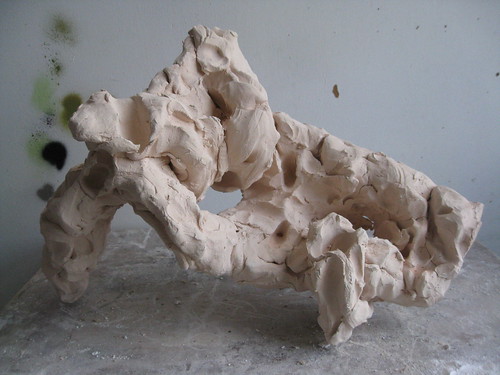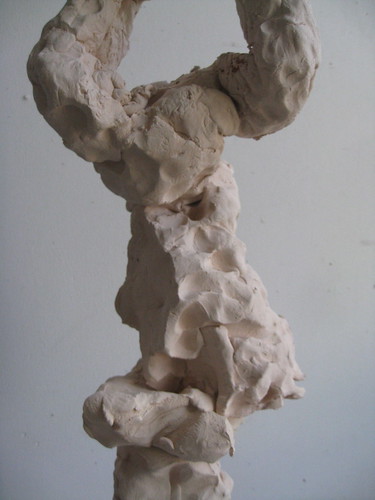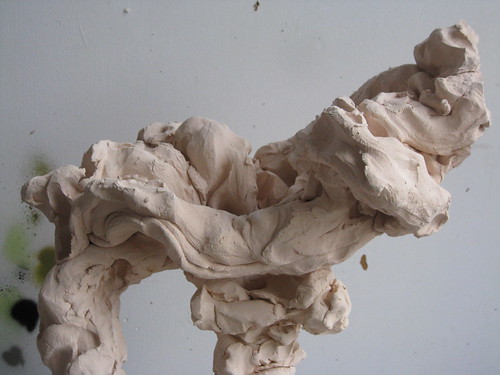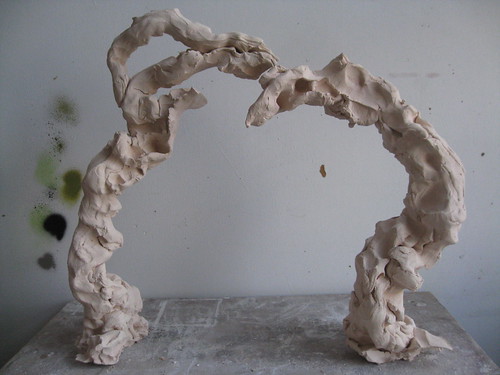
First, the connection to science. Certainly the scientific method has something to do with innovation. We observe, we analyze, we hypothesize, and we experiment. Figuring out what our experiments tell us (or don't tell us) about the natural world leads to the development of new understandings. Something we can call innovation.
All of these activities (observation, analysis, hypothesis-testing, experimentation) go into my sculpture work too. But how much of the time can we say that innovation is a product of frustrating "failures?" Maybe a lot. It may seem to non-scientists as though science were an ordered process, dictated by strict rules. I think a lot of scientific innovation is the product of accidents of some sort. At least that's been my experience. So let's agree for the time being that "scientific method" in science and in art, perhaps with a healthy dose of accidental discovery, leads to something like "innovation."
But how much can we say that scientific innovation leads to greater expression? In my experience with sculpture, I would say one hundred percent that innovation has led to expression, and I'll explain more of that later. In science too, the scientist "expresses" ideas about the natural world. It all seems connected to to the unconscious somehow, which would say a lot for scientists (and artists) letting go.
Letting go? In a lab full of glassware? In a studio full of chemicals? Doesn't seem to make sense. Or does it? If we "let go" and allow our accidents to lead to innovation, and if we let our innovations lead to enhanced expression, isn't there some value in permitting the subconscious to lead us where we're going?
These ideas might sound antithetical to people who take their science or their art "seriously." What about all those frustrating years of training? Mustering discipline? Deferring personal goals for the sake of a career? Could it be that we need to think about alternative ways to train ourselves? To let some inner voice guide us as we develop professionally?
All of these are difficult questions that we can take up again another time. But I promised I would talk about how innovation in my clay work has led to further expression....In my post yesterday I wrote about how I was enamored of these new forms that just came out of the kiln. I thought about it some more and I think I have an explanation, or at least the beginnings of one...
When I form clay I try to let my hands do the work of my heart, and to a lesser extent, the work of my brain. It's not that I'm not "mindful" of what I'm doing. If anything, I'm very mindful of precisely, "letting go," letting my hands, arms, and the rest of my body "do whatever they want" to the clay with no specific goal in mind.
In most of my applications for residencies and fellowships I've written, "all of my work is abstract and non-functional." I've reconsidered this in light of some of the ideas I'm discussing here. My work does have a function. Its function is to express something that is deep inside me, something I've been sketching since I was a kid, something cartoon-like, silly, emotive, and uniquely gestural. As I pull the new work out of the kiln I see in front of me the sketches I've always done, sketches that are in themselves an expression of my art sense.
The interesting thing to me is that if I brought one of these sketches into the studio and tried to form a piece that looked like them, I would never be able to accomplish what I set out to do. At one level, I doubt I'd be able to make the shape I was after. At a deeper level, I couldn't make the piece express what it does when I simply let go and do the work.





Really enjoying your postings and their physical "meditations" using clay, around issues of the creative and the scientific.
ReplyDeleteThe beauty of enhancing our creativity is that we can learn to look at the world in a different perspective. Being creative is not only about art or music. It’s the way we approach life.
ReplyDeleteRelationship Banking